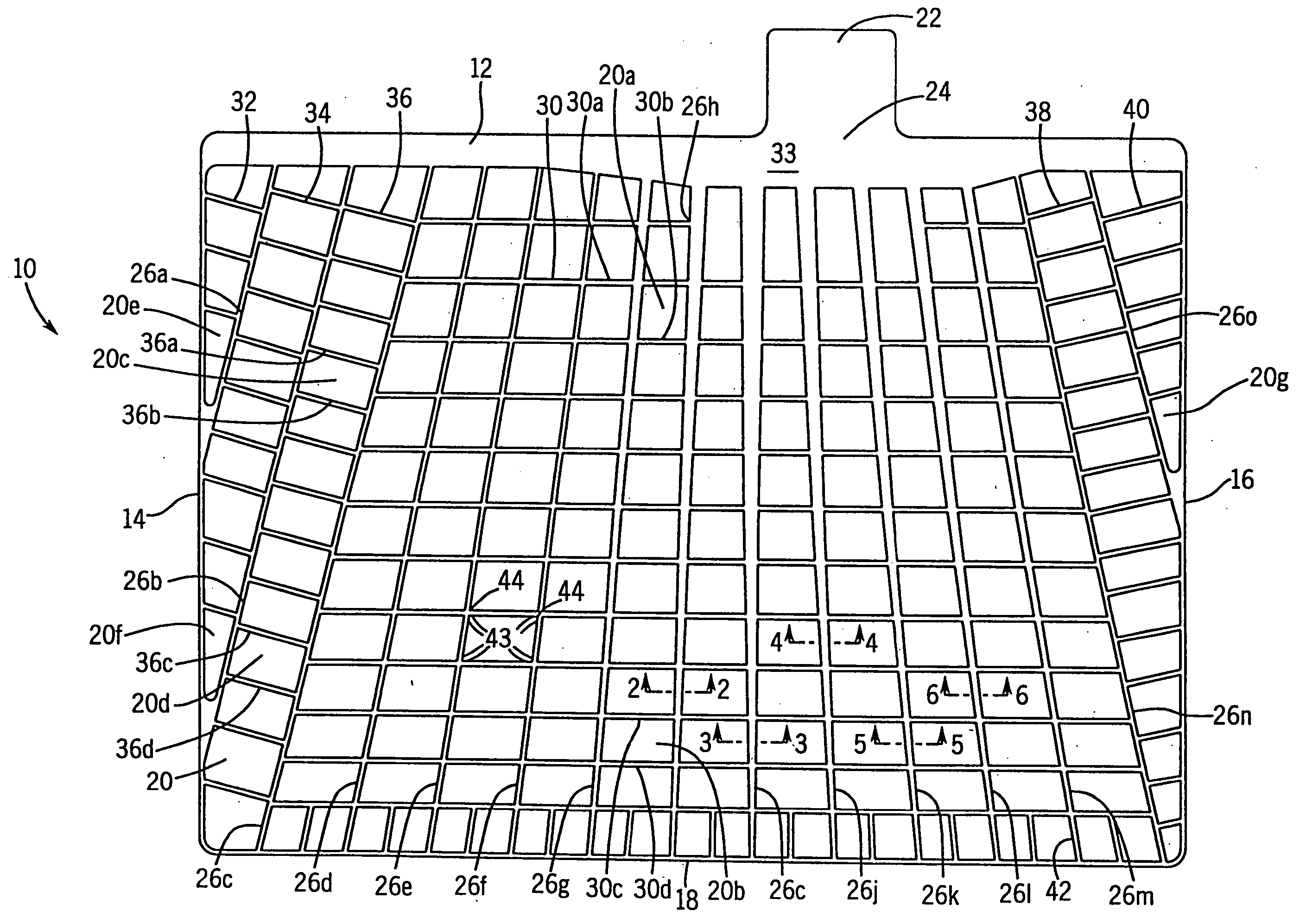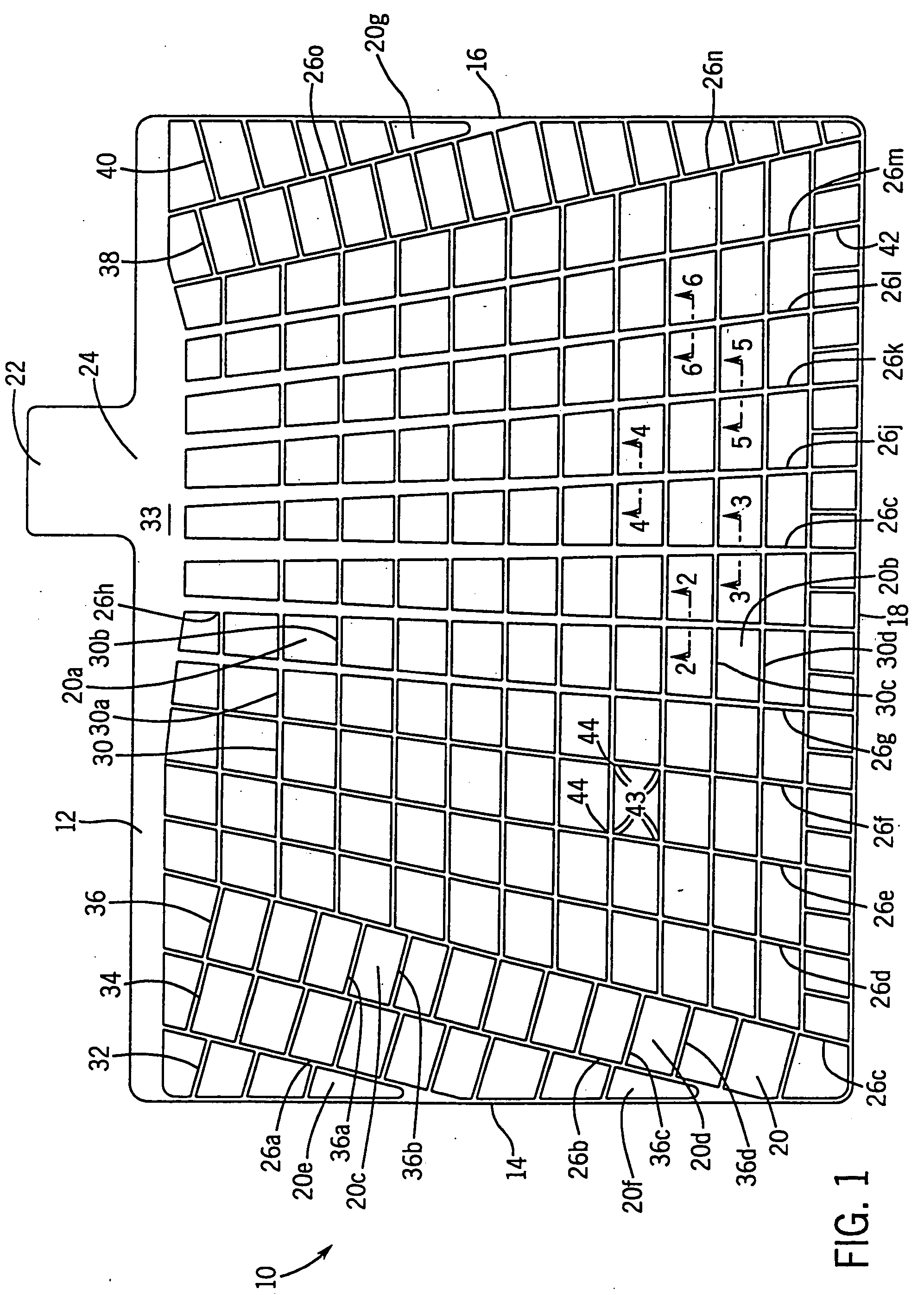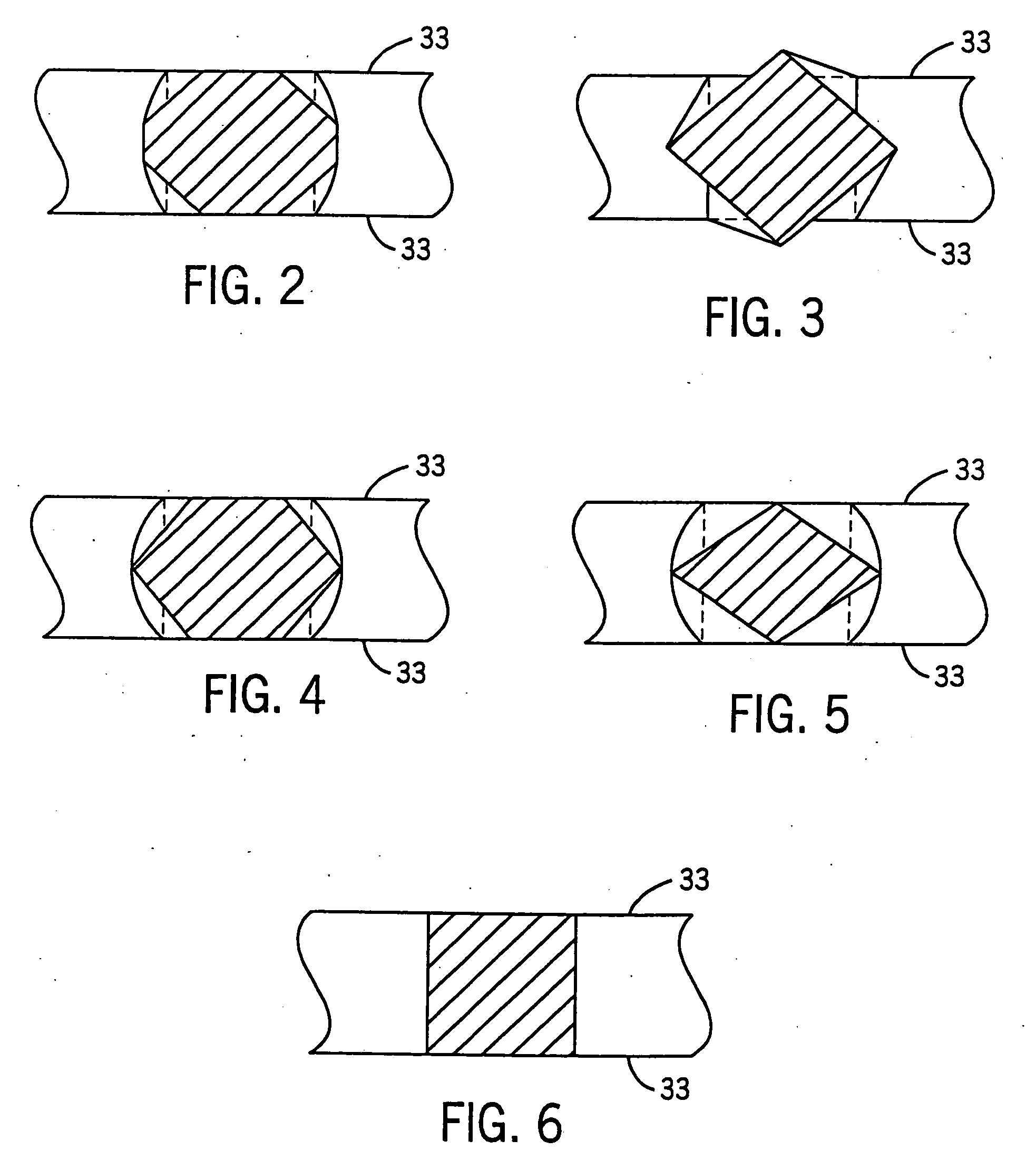Method of producing battery plates
a technology of battery plate and plate plate, which is applied in the manufacture of final products, cell components, basic electric elements, etc., can solve the problems of low formation efficiency of positive plate, high formation charge, and inefficient charging of resulting batteries assembled with such plates, so as to improve contact, increase the formation efficiency of battery and battery cycle life, and improve the effect of adhesion
- Summary
- Abstract
- Description
- Claims
- Application Information
AI Technical Summary
Benefits of technology
Problems solved by technology
Method used
Image
Examples
example 1
[0068] A conventional stamped battery grid with grid wires having a rectangular cross-section and smooth surfaces (as depicted in FIGS. 1 and 6) was pasted with a conventional positive paste for lead acid batteries and then cured. The cured plate was sectioned with a cutting wheel in a direction transverse to the planar surface of the plate, polished, and photographed. The photograph is shown in FIG. 7. As FIG. 7 shows, the cured plate exhibits gaps 70 at the paste 72 / grid wire 73 interfaces, and the gaps extend into the bulk paste as cracks 71.
EXAMPLE 1(a)
[0069] A second conventional stamped battery grid identical to the grid used in Example 1 was substantially modified by rotating a major portion of grid wires by 45 degrees. (This version of a grid is depicted in FIGS. 1 and 3.) The modified grid was then pasted with a conventional positive paste for lead acid batteries and cured. The cured plate was sectioned with a cutting wheel in a direction transverse to the planar surface ...
example 1 (
EXAMPLE 1(c)
[0071] A fourth conventional stamped battery grid identical to the grid used in Example 1 was substantially modified by stamping the grid wires to form an octagonal shaped cross-section. (This version of a grid is depicted in FIGS. 1 and 2.) The modified grid was then pasted with a conventional positive paste for lead acid batteries and cured. The cured plate was sectioned with a cutting wheel in a direction transverse to the surface of the plate, polished, and photographed. The photograph is shown in FIG. 10. It can be seen from FIG. 10 (wherein the grid wire is designated at 100 and the paste is designated at 101) that the plate prepared using the modified grid of Example 1(c) exhibited improved paste adhesion compared to the plate prepared using the grid of Example 1 (FIG. 7) and that the plate prepared using the modified grid of Example 1(c) exhibited a reduced number of cracks.
example 2
[0072] Vibration weight loss is a very good measure to evaluate the strength of a battery plate. In order to demonstrate the effectiveness of the present invention, two battery plates were prepared. The first battery plate was prepared using the procedure of Example 1, and the second battery plate was prepared using the procedure of Example 1(c). The control plate of Example 1 and the plate of the present invention as described as Example 1(c) were then placed on a platform vibrating at a frequency of about 60 hertz with an amplitude of about three millimeters for one minute. The plate weights before and after vibration were compared. On average, the control plates of Example 1 lost 16 times the battery paste that was lost in plates formed in accordance with the present invention of Example 1(c). This test demonstrated that when assembled into battery plates, battery grids manufactured in accordance with the present invention improve paste adhesion between the grid and the paste.
PUM
| Property | Measurement | Unit |
|---|---|---|
| frequency | aaaaa | aaaaa |
| temperature | aaaaa | aaaaa |
| shape | aaaaa | aaaaa |
Abstract
Description
Claims
Application Information
 Login to View More
Login to View More - R&D
- Intellectual Property
- Life Sciences
- Materials
- Tech Scout
- Unparalleled Data Quality
- Higher Quality Content
- 60% Fewer Hallucinations
Browse by: Latest US Patents, China's latest patents, Technical Efficacy Thesaurus, Application Domain, Technology Topic, Popular Technical Reports.
© 2025 PatSnap. All rights reserved.Legal|Privacy policy|Modern Slavery Act Transparency Statement|Sitemap|About US| Contact US: help@patsnap.com



